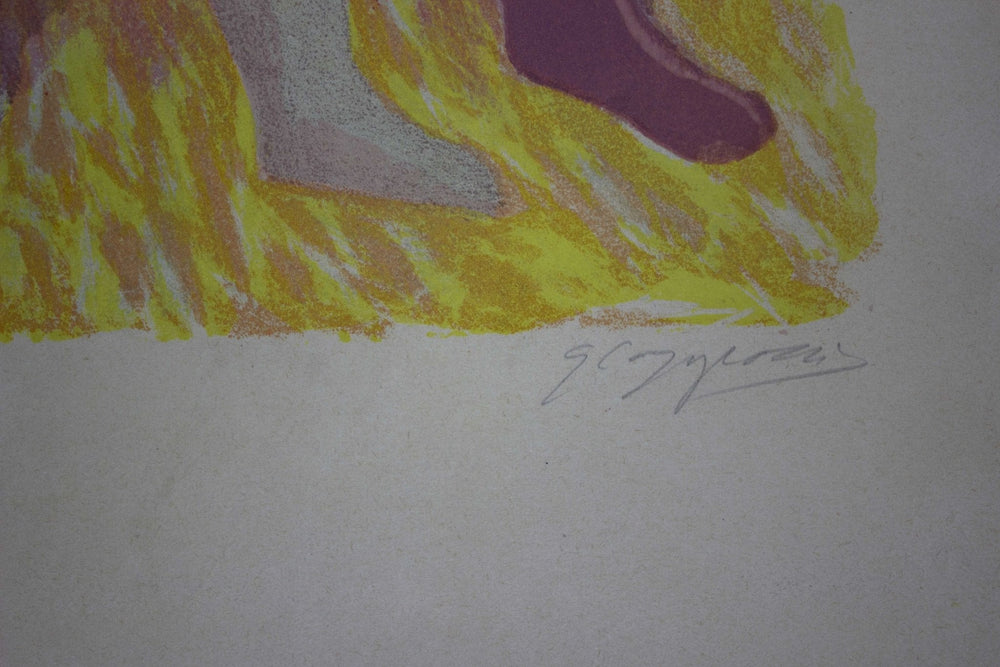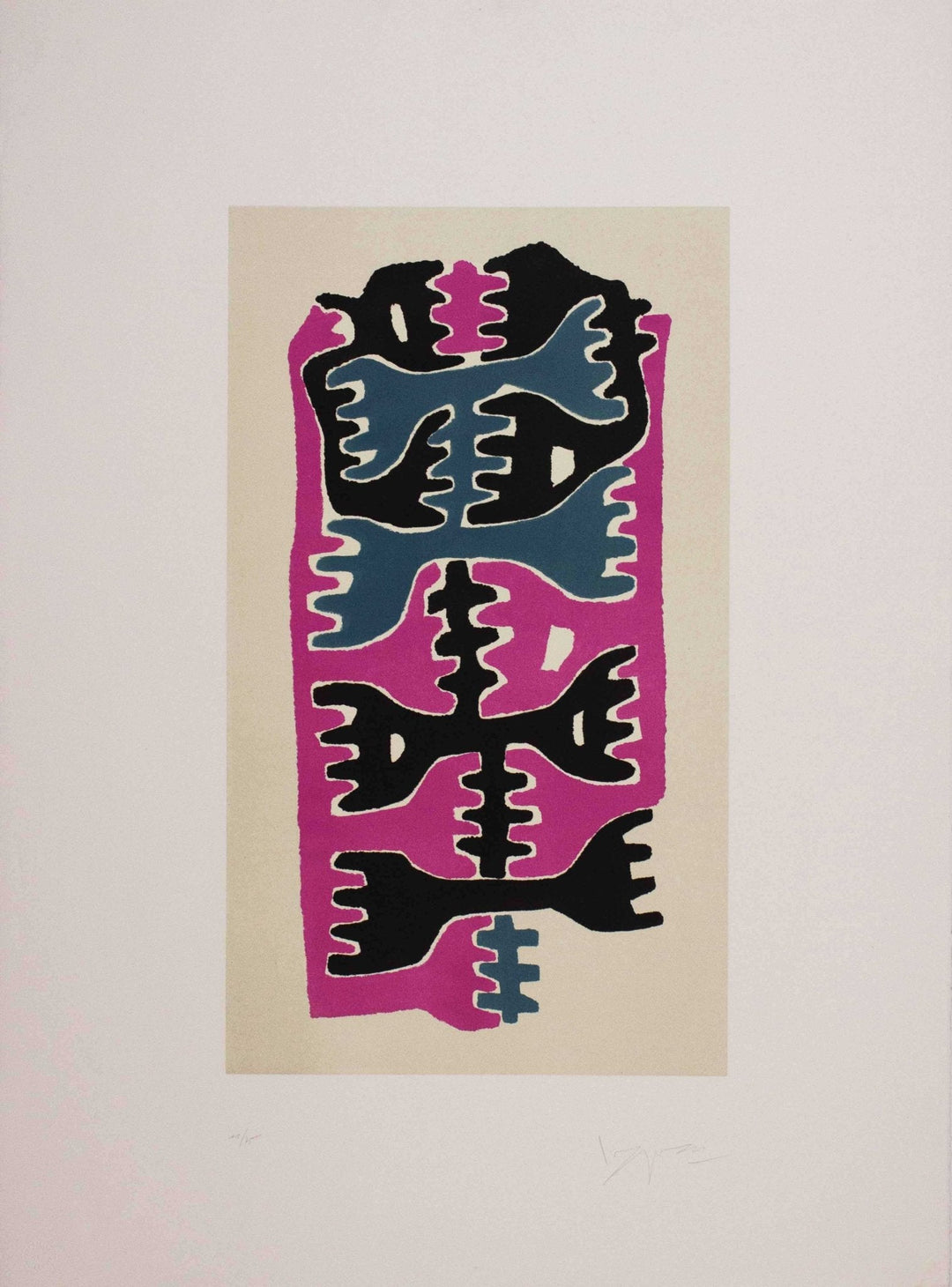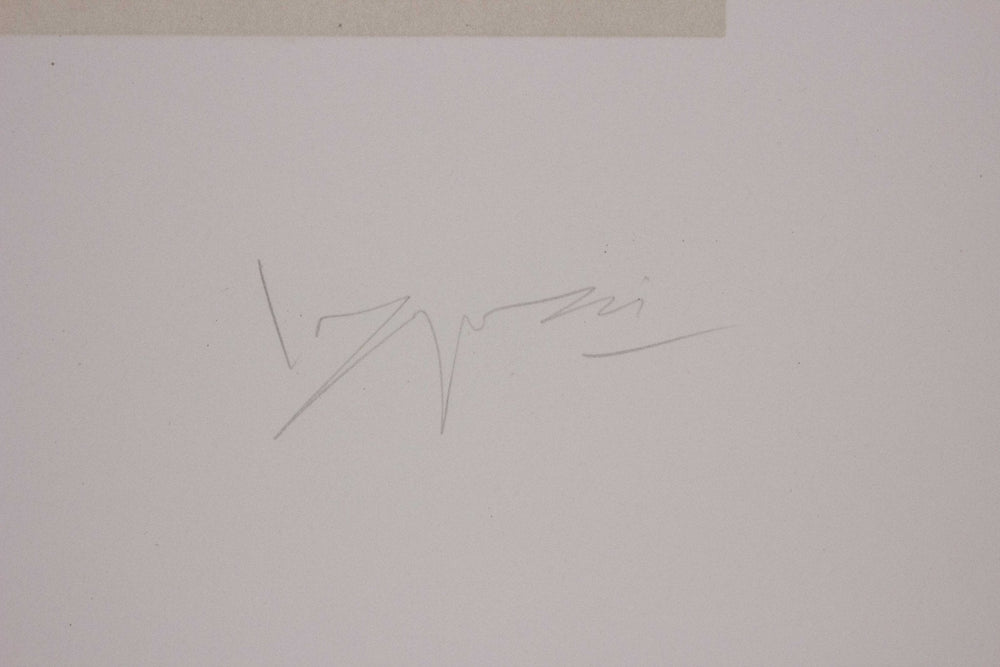GIUSEPPE CAPOGROSSI
Giuseppe Capogrossi, born in Rome on March 7, 1900, is one of the most emblematic figures of 20th-century Italian art. Coming from a noble family, he initially pursues an academic path, graduating in Law at the University La Sapienza of Rome, but soon his passion for painting takes over. Decisive for his artistic formation is the meeting with Felice Carena and Giambattista Conti, who guide him towards figurative painting. Between 1923 and 1924 he attends the Free School of the Nude, one of the most prestigious institutions of the time.
In 1927 Capogrossi makes the first of a long series of trips to Paris, where he is deeply influenced by artists such as Pablo Picasso, Amedeo Modigliani and Pierre-Auguste Renoir. In this cosmopolitan context, he develops a figurative and tonal painting, with references to classical Italian art, and begins a path that inserts him into the international artistic circuit. His first exhibition takes place the same year in Rome, followed by participation in the XXVII Venice Biennale in 1930.
In 1932, together with Corrado Cagli, Emanuele Cavalli and Eloisa Michelucci, he exhibits at the Galleria Roma, establishing himself as one of the leading exponents of the Roman School. The critic Waldemar George coins the term "École de Rome" for this group. The following year he participates in the famous Paris exhibition at the Galleria Bonjean. It is during this period that Capogrossi signs the "Manifesto of Plastic Primordialism", marking a fundamental moment in the theoretical reflection on figurative art.
During the Thirties and Forties, Capogrossi develops an increasingly personal language. His painting becomes chromatically lively, with intense reds, purples, and oranges, and his brushstroke becomes more and more dynamic. Starting from 1947, after a brief phase of cubist experimentation, he progressively abandons figuration to approach a rigorous and innovative abstract language. In 1950 he is among the founders of the Origine Group, together with Mario Ballocco, Alberto Burri and Ettore Colla, with whom he shares a vision of pure art, far from any rhetoric.
From this moment on, the painter Capogrossi builds his own visual alphabet based on a recurring sign-form, which he modulates in infinite variations to structure the space of the painting. This abstract research is exhibited for the first time in an epochal exhibition in 1950 at the Galleria del Secolo in Rome. Collaborations with Carlo Cardazzo follow, thanks to whom Capogrossi's artworks begin to circulate systematically also outside Italy.
Throughout his career, Capogrossi participates in numerous international exhibitions: Documenta in Kassel, Venice Biennale (where in 1962 he receives the painting prize), São Paulo Biennale, and in 1951 he is the only Italian artist invited to the exhibition “Véhémences Confrontées” in Paris. His paintings enter the collections of leading museums, such as the Guggenheim Foundation in New York and the Peggy Guggenheim Collection in Venice.
Besides being a tireless experimenter, Giuseppe Capogrossi also has an important teaching career: he teaches Figure Drawing at the Artistic High School of Rome from 1940 to 1966, then holds the chair of Decoration at the Academy of Fine Arts of Naples until 1970. He dies in Rome on October 9, 1972. To preserve and spread his legacy, the Capogrossi Archive Foundation is established, which preserves a vast documentary and library heritage.
GIUSEPPE CAPOGROSSI ARTWORS
Before arriving at abstract painting, Giuseppe Capogrossi goes through a long and intense figurative period that proves fundamental to understand the evolution of his visual language. The artworks of Capogrossi from this period (1927–1949) stand out for formal simplification, a vibrant chromatic investigation, and a strong interest in the human figure.
One of the most interesting aspects of the figurative painter Capogrossi is his attention to the female figure. Artworks like “Figure at Rest” and his famous “Ballerinas” already show a tension towards abstraction, with simplified volumes and balanced compositions, in which the future transformation of his language can be intuited.
In parallel, Capogrossi refines a rich and vibrant palette, with bright tones that give expressive strength to his canvases. His influences range from Cézanne to the French masters of the twentieth century, but filtered through a distinctly Italian sensitivity. These figurative works, today less known to the general public, are nevertheless fundamental to understand the depth and coherence of Giuseppe Capogrossi's artistic research.
Starting from the Forties, his paintings show a progressive reduction of the visual data, in a gradual passage towards synthetic forms and essential signs, which prelude the invention of his famous “abstract sign”, a repeated and varied module that will represent the core of his mature work.
GIUSEPPE CAPOGROSSI QUOTATIONS
In the panorama of modern Italian art, Capogrossi's quotations remain high and stable, both for his figurative works and for the abstract artworks. Giuseppe Capogrossi's paintings belonging to the abstract phase, especially those of the “Surface” series (started around 1949), are among the most requested by the international market, with auction results frequently exceeding hundreds of thousands of euros.
Also the artworks from the figurative period, although less known, are experiencing a critical and commercial rediscovery, thanks to retrospective exhibitions and the enhancement carried out by the Capogrossi Archive Foundation. In particular, paintings depicting female figures or intimate scenes linked to the Roman School are arousing new interest among collectors and gallerists.
Capogrossi's paintings are present in important public and private collections worldwide, and the recognition of his contribution to informal art places him alongside giants like Lucio Fontana and Alberto Burri. The positive trend of Capogrossi's quotations reflects the importance of the artist in the history of 20th-century Italian art, as well as the coherence and originality of his artistic research.
Giuseppe Capogrossi is not only one of the protagonists of abstract art in Italy, but also a master who has been able to combine formal rigor and expressive freedom in a coherent, profound artistic path, today more relevant than ever.












